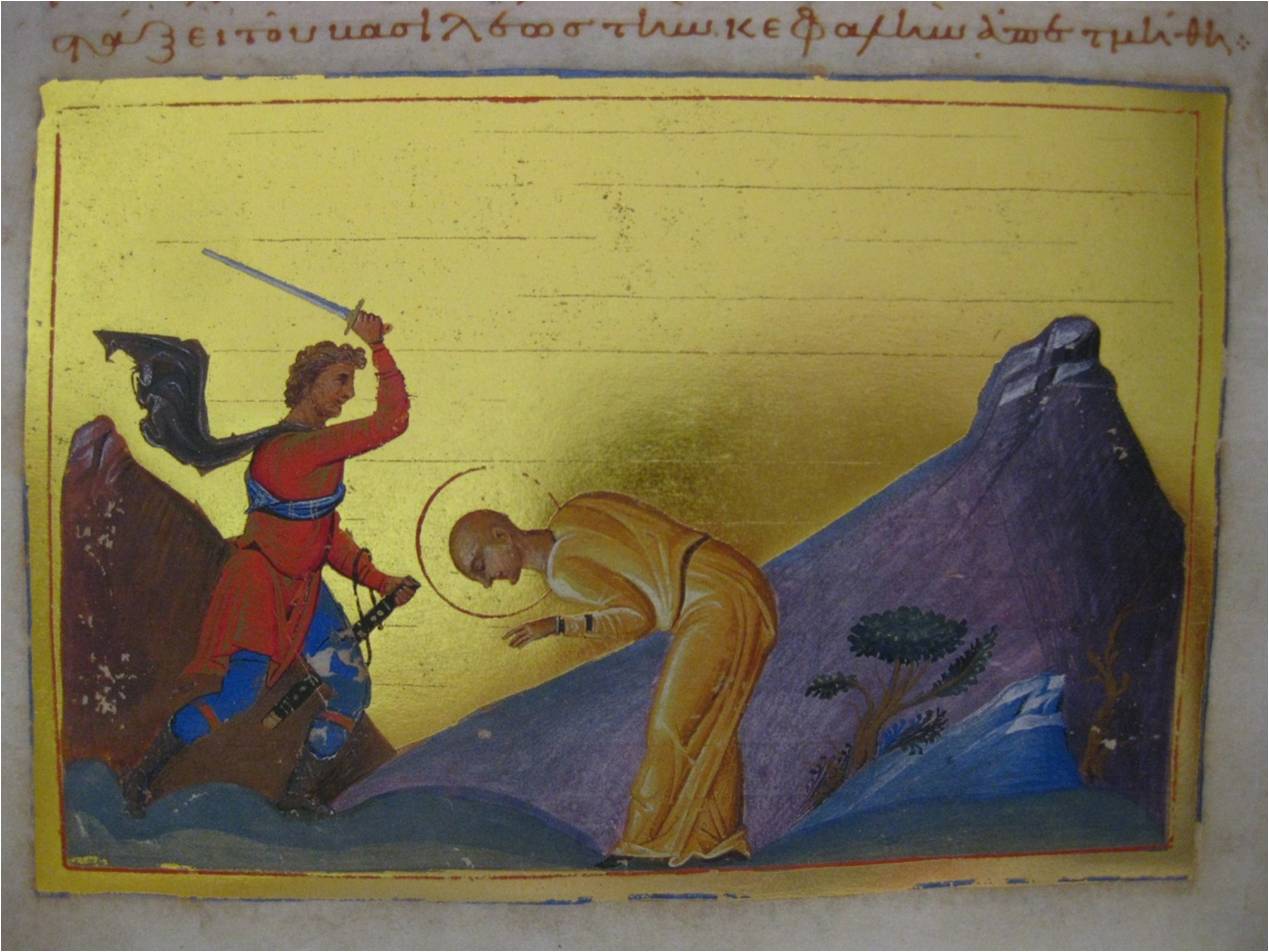
Saints and Scholars
Supervisory team: Dr James Corke-Webster (King’s), Dr Anne Alwis (Kent)
Based at: either partner (apply to one or both)
KOM Theme: D – Chronologies of Knowledge
In this project, the successful candidate will explore the technical and literary development of the most prolific genre of the late-antique, Byzantine, and medieval worlds – hagiography. The term ‘hagiography’ encompasses a wide range of genres: martyrdoms, saints’ lives, and all types of edifying narratives. All relate stories of extraordinary individuals who attained sanctity. Although hagiography is the most versatile and widespread of early Christian genres it remains one of the most unexplored.
These texts were written for over a millennium in Late Antiquity and Byzantium, with many incorporated into the liturgy as early as the seventh century. Since, meaning they were read aloud, particularly in medieval Turkey, Greece, Syria, North Africa, Egypt, and Palestine. They were designed to teach, inspire, edify, and entertain. Moreover, they had a vast geographical reach, because they were translated into Byzantium’s myriad languages – Latin, Slavonic, Coptic, Ethiopic, Syriac, Armenian or Georgian – and thus spread throughout Christendom, and its varied inhabitants of different ethnicities, ages, social stations, and genders.
The candidate will trace the development of this new genre between the third and twelfth centuries in terms of literary influences, the physical means of transmission, and the interconnections between them. This innovative combination of the literary and the palaeographical treats hagiographic narratives as both sophisticated literary texts and meaningful material objects to provide fresh purchase on the place of this most important genre in the changing cultures of Mediterranean over a millenium.
Late-Antique Greek texts mostly survive in generic compendia, homilies, historiographies and in translations in other languages such as Syriac, Arabic or Latin, for example. From the tenth century onwards, they are primarily found in synaxaria (short narratives on a saint, read during the liturgy on the saints’ feast or death dates) and menologia. These were church calendars, arranged by month. Saints and martyrs are again celebrated on their feast day or death day. Moreover, these stories interact, cross-pollinate and merge depending on the interests and needs of their users, and their different social, cultural, geographical, and political contexts.
Tracing the technical and literary development of these texts over time offers opportunities for much deeper and fascinating insights into changing reading and writing practices and the evolution of narrative over ten centuries.